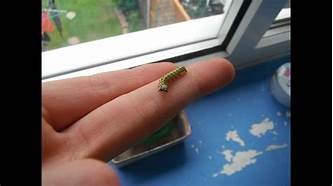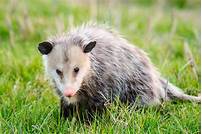How to Keep a Pet Caterpillar
Caterpillars are fascinating creatures that can make interesting and low-maintenance pets. With proper care, you can keep a pet caterpillar for several weeks or even months, until it transforms into a beautiful butterfly or moth. Here's a step-by-step guide on how to keep a pet caterpillar:

Finding and Identifying Your Caterpillar
1. Look for caterpillars in your garden, local park, or natural areas. Caterpillars can be found on leaves, stems, and branches of trees, shrubs, and flowers.
2. Identify the species of caterpillar you have found using a caterpillar identification guide or online resources.
3. Make sure the caterpillar is not poisonous or harmful to humans or other pets before bringing it indoors.
Preparing a Caterpillars Habitat
1. Choose a container for your caterpillar's habitat. A clear glass or plastic container with a lid is a good option. Make sure the container is large enough to provide ample space for the caterpillar to move around.
2. Line the bottom of the container with a layer of substrate. This can be compost, potting soil, or vermiculite. The substrate should be moist but not soggy.
3. Add some food plants for your caterpillar. The specific type of food plant will depend on the species of caterpillar you have. Some common food plants include milkweed for monarch caterpillars, parsley for black swallowtail caterpillars, and dill for cabbage white caterpillars.
Caring for Your Caterpillar
1. Keep the caterpillar's habitat clean by removing any uneaten food or droppings regularly.
2. Provide fresh food plants for your caterpillar as needed. The caterpillar will eat a lot, so be sure to keep a steady supply of food available.
3. Mist the caterpillar's habitat with water occasionally to maintain humidity. However, avoid making the habitat too wet, as this can lead to mold and mildew.
Observing and Monitoring Your Caterpillar
1. Observe your caterpillar's behavior and growth. Take notes of its eating habits, movement patterns, and any changes in appearance.
2. Monitor the caterpillar's health. If the caterpillar stops eating, appears lethargic, or has any other signs of illness, consult a veterinarian or expert in caterpillar care.
3. Be patient and enjoy the process of watching your caterpillar grow and transform.
Transforming Your Caterpillar into a Butterfly or Moth
1. Once your caterpillar is ready to pupate, it will spin a cocoon or chrysalis. Place the cocoon or chrysalis in a separate container with a netted lid or mesh fabric to allow air circulation.
2. Keep the cocoon or chrysalis in a warm and humid environment. The specific conditions will vary depending on the species of caterpillar.
3. Wait patiently for the butterfly or moth to emerge from the cocoon or chrysalis. This can take several weeks or even months.
Remember, keeping a caterpillar as a pet is a fun and educational experience, but it also involves responsibility. Be sure to provide your caterpillar with proper care and attention, and observe it closely to ensure its well-being.Declaration: All article resources on this website, unless otherwise specified or labeled, are collected from online resources. If the content on this website infringes on the legitimate rights and interests of the original author, you can contact this website to delete it.





